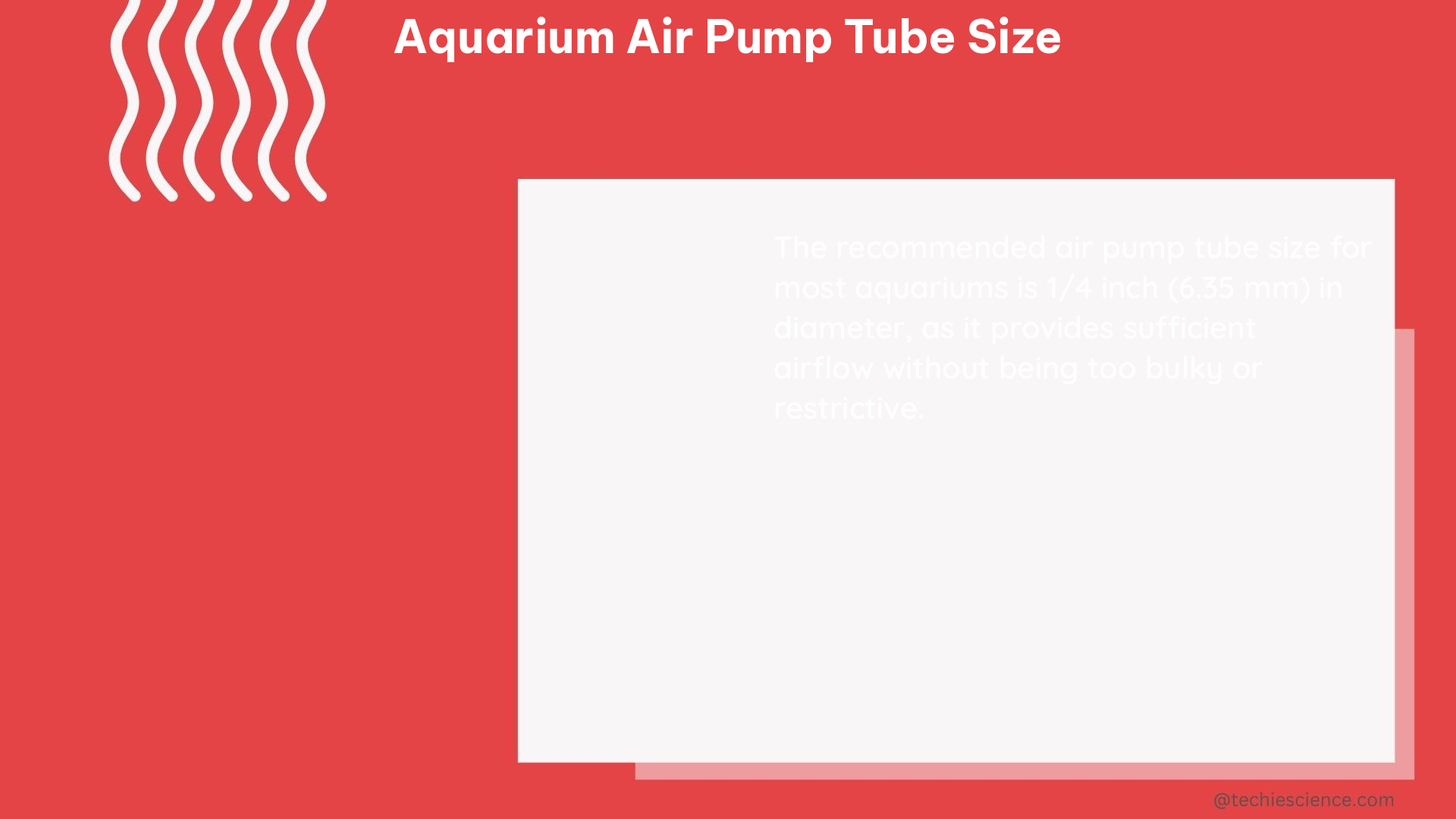Aquarium air pump tube size is a crucial factor in ensuring the proper functioning of air-driven filters and other aquarium equipment. The size of the air pump tube directly impacts the flow rate and pressure, which in turn affects the oxygenation and filtration of the aquarium water. This comprehensive guide will provide you with the technical specifications, measurements, and expert insights to help you choose the right air pump tube size for your aquarium setup.
Measuring Airflow: The Displacement Method
Accurately measuring the airflow of an aquarium air pump is the first step in determining the appropriate tube size. The displacement method is a simple yet effective way to measure the airflow rate. Here’s how it works:
- Place the air pump in a tank of water, ensuring the air outlet is submerged.
- Collect the bubbles generated by the air pump in a graduated measuring cup or container for a known period, such as 1 minute.
- Measure the volume of the collected bubbles and divide it by the time to calculate the airflow rate in liters per minute (LPM).
For example, if you collect 5 liters of bubbles in 1 minute, the airflow rate of your air pump is 5 LPM. This method provides a rough estimate of the airflow, but it’s a good starting point for determining the appropriate tube size.
Tube Diameter and Flow Rate

The standard airline tubing for most aquarium air pumps is 3/16″ (4.76 mm) in diameter. This diameter is suitable for most aquarium applications, but the flow rate can vary depending on the pressure and the length of the tube.
| Tube Diameter | Typical Flow Rate |
|---|---|
| 1/8″ (3.18 mm) | 1-3 LPM |
| 3/16″ (4.76 mm) | 3-6 LPM |
| 1/4″ (6.35 mm) | 6-10 LPM |
It’s important to note that the flow rate can also be affected by the air pump’s output. For instance, in one case, the user aimed to achieve a flow rate of 5 LPM for each of the 16 fish tanks, which required an 80 LPM air pump and a 16-outlet manifold. However, the manufacturer recommended using a manifold with 70-80 outlets for optimal performance.
Tube Length and Pressure
The length of the airline tubing can also affect the pressure and flow rate. As a general rule, pressure does not typically decrease over short distances, such as 5′-20′. However, the tubing can cause friction, which may slow down the air over long distances.
In one case, an airline tube ran from the basement to the first floor, covering a distance of at least 20 feet, without any noticeable pressure loss. This suggests that for most aquarium setups, the length of the tube is not a significant factor in determining the air pump tube size, as long as the distance is reasonable.
Calculating the Optimal Tube Size
To determine the optimal air pump tube size for your aquarium, follow these steps:
- Measure the airflow rate of your air pump using the displacement method.
- Refer to the table above to select the appropriate tube diameter based on your desired flow rate.
- Consider the length of the tube and the distance it needs to cover. For most aquarium setups, a 3/16″ (4.76 mm) tube should be sufficient, even for longer runs.
- If you have a larger aquarium or multiple tanks, you may need to use a higher-capacity air pump and a manifold system to distribute the air effectively. In such cases, you may need to use a larger tube diameter, such as 1/4″ (6.35 mm).
Remember, the key to choosing the right air pump tube size is to match it with the airflow requirements of your aquarium setup. By following the guidelines and techniques outlined in this guide, you can ensure optimal oxygenation, filtration, and overall health of your aquarium inhabitants.
Reference:
- Sizing Up Large Air Pump for Fish Room
- Is there a relatively inexpensive way to measure air pump flow rate?
- Air Line Tubing
- Is there a max length of airline tubing from air pump to tank?
- Airline Tubing Length
